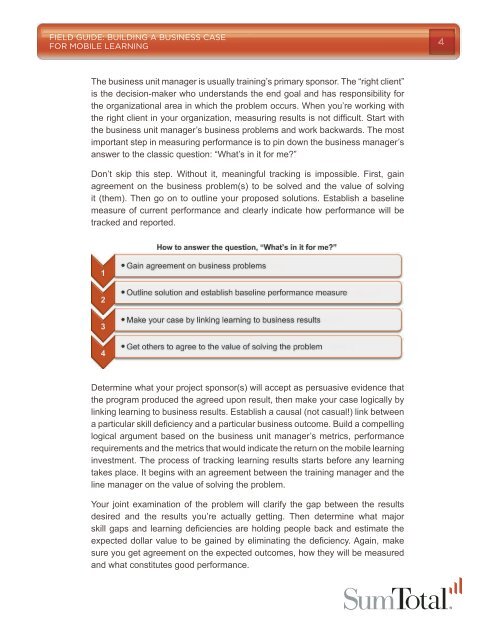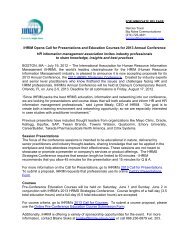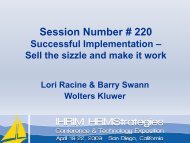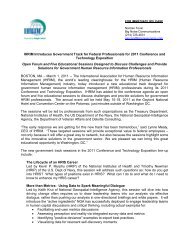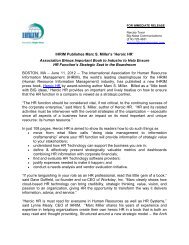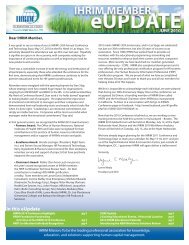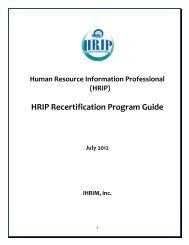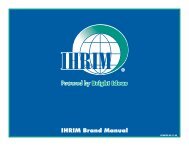SumT wp FieldGuide MobileLearning.pdf - IHRIM
SumT wp FieldGuide MobileLearning.pdf - IHRIM
SumT wp FieldGuide MobileLearning.pdf - IHRIM
You also want an ePaper? Increase the reach of your titles
YUMPU automatically turns print PDFs into web optimized ePapers that Google loves.
FIELD GUIDE: BUILDING A BUSINESS CASE<br />
FOR MOBILE LEARNING<br />
4<br />
The business unit manager is usually training’s primary sponsor. The “right client”<br />
is the decision-maker who understands the end goal and has responsibility for<br />
the organizational area in which the problem occurs. When you’re working with<br />
the right client in your organization, measuring results is not diffi cult. Start with<br />
the business unit manager’s business problems and work backwards. The most<br />
important step in measuring performance is to pin down the business manager’s<br />
answer to the classic question: “What’s in it for me?”<br />
Don’t skip this step. Without it, meaningful tracking is impossible. First, gain<br />
agreement on the business problem(s) to be solved and the value of solving<br />
it (them). Then go on to outline your proposed solutions. Establish a baseline<br />
measure of current performance and clearly indicate how performance will be<br />
tracked and reported.<br />
Determine what your project sponsor(s) will accept as persuasive evidence that<br />
the program produced the agreed upon result, then make your case logically by<br />
linking learning to business results. Establish a causal (not casual!) link between<br />
a particular skill defi ciency and a particular business outcome. Build a compelling<br />
logical argument based on the business unit manager’s metrics, performance<br />
requirements and the metrics that would indicate the return on the mobile learning<br />
investment. The process of tracking learning results starts before any learning<br />
takes place. It begins with an agreement between the training manager and the<br />
line manager on the value of solving the problem.<br />
Your joint examination of the problem will clarify the gap between the results<br />
desired and the results you’re actually getting. Then determine what major<br />
skill gaps and learning defi ciencies are holding people back and estimate the<br />
expected dollar value to be gained by eliminating the defi ciency. Again, make<br />
sure you get agreement on the expected outcomes, how they will be measured<br />
and what constitutes good performance.


